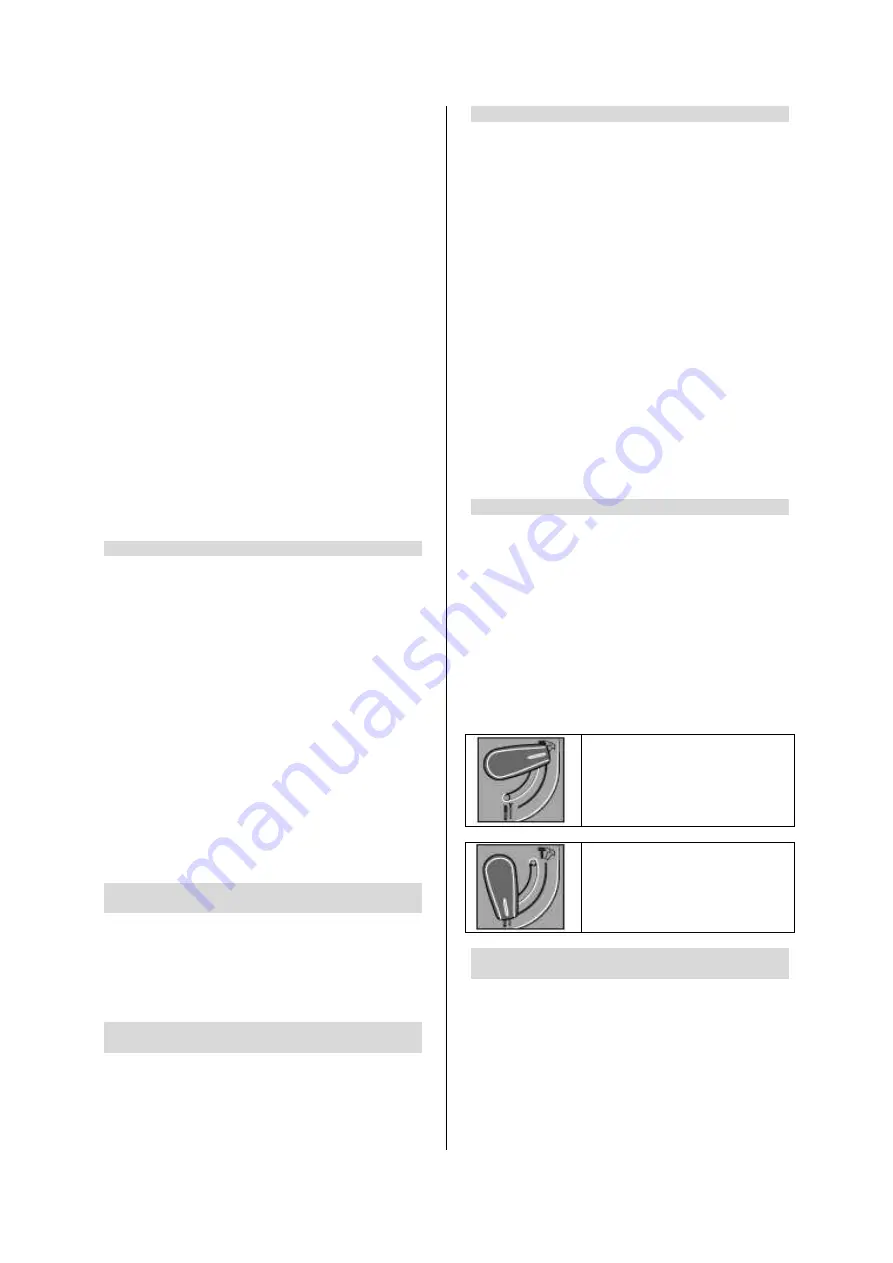
24
When the battery charge-control indicator 5
lights up red for approx. 5 seconds with the
On/Off switch 9 pressed through halfway or fully,
then the battery has less than 30% of its capacity
and should be charged.
The charging procedure begins as soon as the
mains plug of the battery charger is plugged into
a socket outlet and the charge connector 11 is
plugged into the socket 10 on the bottom of the
handle.
The battery charge-control indicator 5 indicates
the charging progress. During the charging process,
the indicator
5 LED lights from one to four. When
the battery charge-control indicator 5
all four LED’s
are green , the battery is fully charged.
During the charging procedure, the handle of the
machine warms up. This is normal.
Disconnect the battery charger from the mains
supply when not using it for longer periods.
The power tool cannot be used during the charge
procedure; it is not defective when inoperative
during the charging procedure.
Protect the battery charger against moisture!
Observe the notes for disposal.
Changing the Tool
The SDS-PLUS tool holder allows for
simple and convenient changing of
drilling tools without the use of additional
tools.
Due to their working principle, SDS-PLUS drilling
tools move freely. This results in radial run-out at
no-load. However, this has no effect on the
accuracy of the drill hole, as the drill bit centres itself
during drilling.
The dust protection cap 2 largely prevents the
entry of drilling dust into the tool holder during
operation. When inserting the tool, take care that
the dust protection cap 2 is not damaged.
A damaged dust protection cap should be
changed immediately. We recommend having
this carried out by an after-sales service.
Inserting SDS-PLUS Drilling Tools
(see figure B)
Clean and lightly grease the shank end of the
tool.
Insert the tool in a twisting manner into the tool
holder until it latches itself.
Check the latching by pulling the tool.
Removing SDS-PLUS Drilling Tools
(see figure C)
Push back the locking sleeve 3 and remove the
tool.
Dust/Chip Extraction
Dusts from materials such as lead-containing
coatings, some wood types, minerals and
metal can be harmful to one’s health. Touching
or breathing-in the dusts can cause allergic
reactions and/or lead to respiratory infections
of the user or bystanders.
Certain dusts, such as oak or beech dust, are
considered as carcinogenic, especially in
connection
with wood-treatment additives (chromate,
wood preservative). Materials containing
asbestos may only be worked by
specialists.
– Provide for good ventilation of the working
place.
– It is recommended to wear a P2 filter-class
respirator.
Observe the relevant regulations in your country
for the materials to be worked.
Operation
Starting Operation
Setting the Operating Mode
With the selector switch for drilling/hammer
drilling 4, the operating mode of the machine is
selected.
Note: Change the operating mode only when the
machine is switched off! Otherwise, the machine
can be damaged.
To change the operating mode, turn the selector
switch for “drilling/hammer drilling” 4 to the
requested position.
Position for hammer drilling in
concrete or stone
Position for drilling without
impact in wood, metal, ceramic
and plastic as well as for
screwdriving
Reversing the Rotational Direction
(see figure D)
Actuate the rotational direction switch 8 only
when the machine is at a standstill.
The rotational direction switch 8 is used to reverse
the rotational direction of the machine.
However, this is not possible with the On/Off
switch 9 actuated.
Right Rotation: For drilling and driving in screws,
push the rotational direction switch 8 left to the
stop.
















































